Moray Firth Dolphins
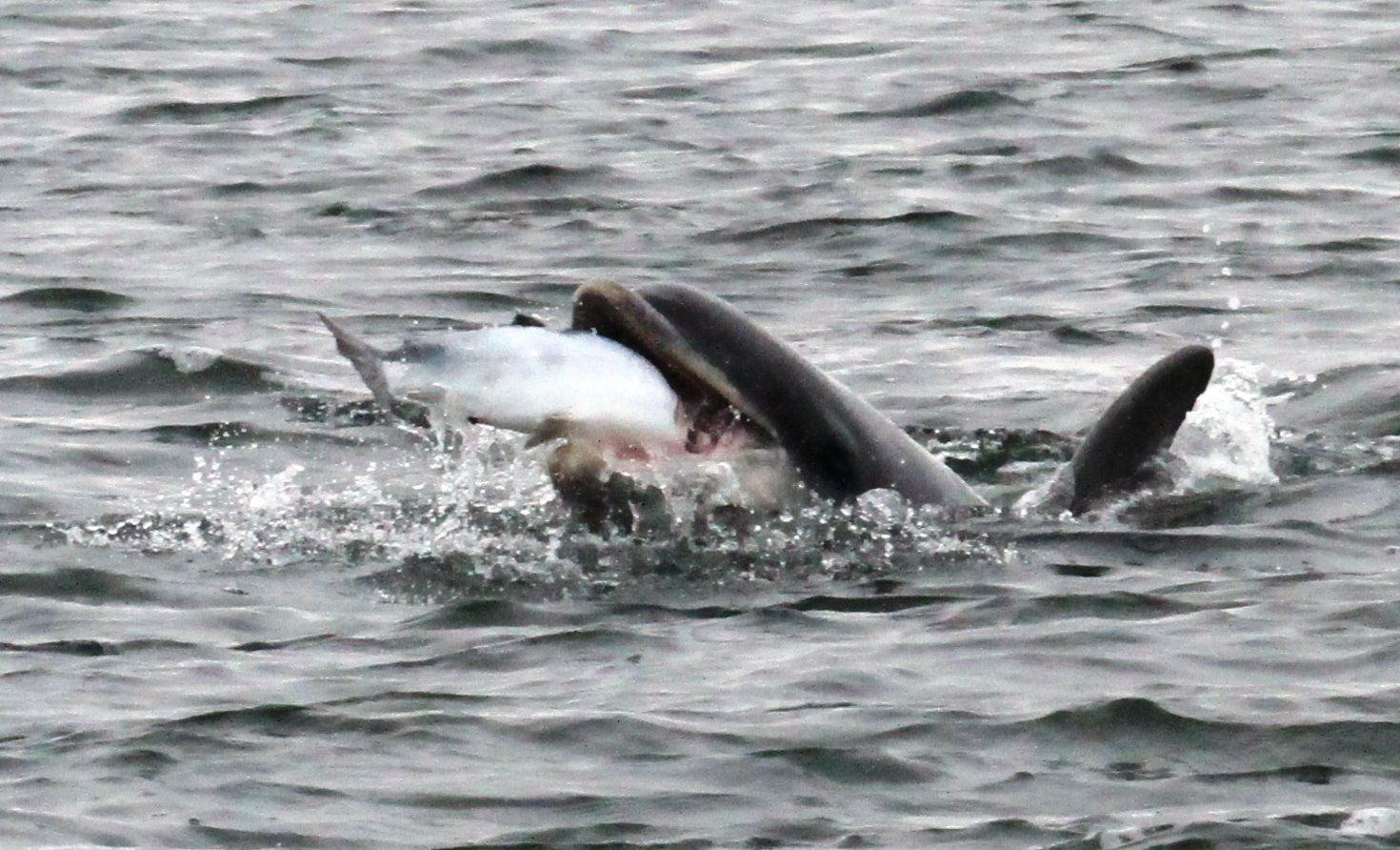
Fish supper. Dolphins swallow their prey head first
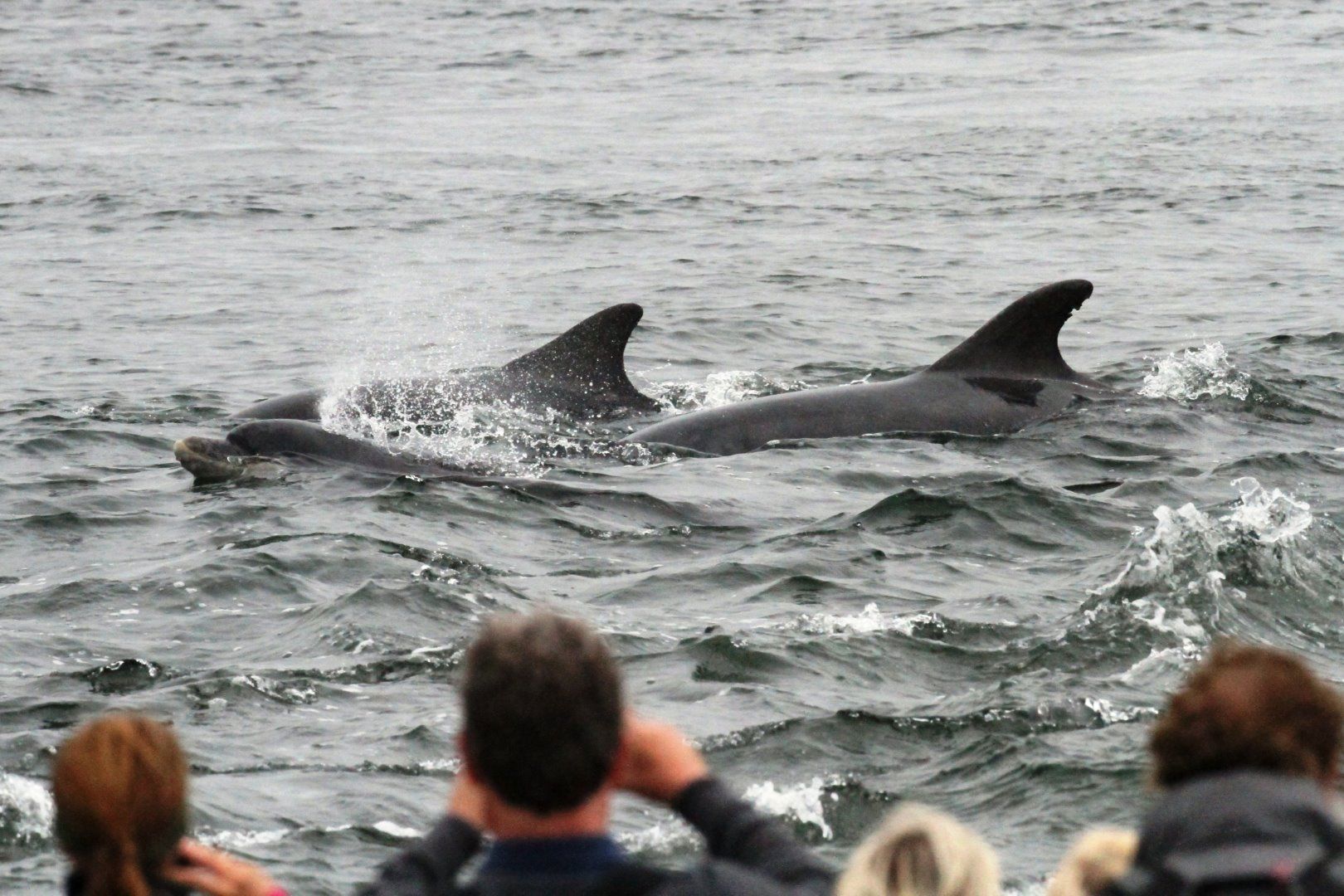
Dolphins cruising past Chanonry Point on the Black Isle
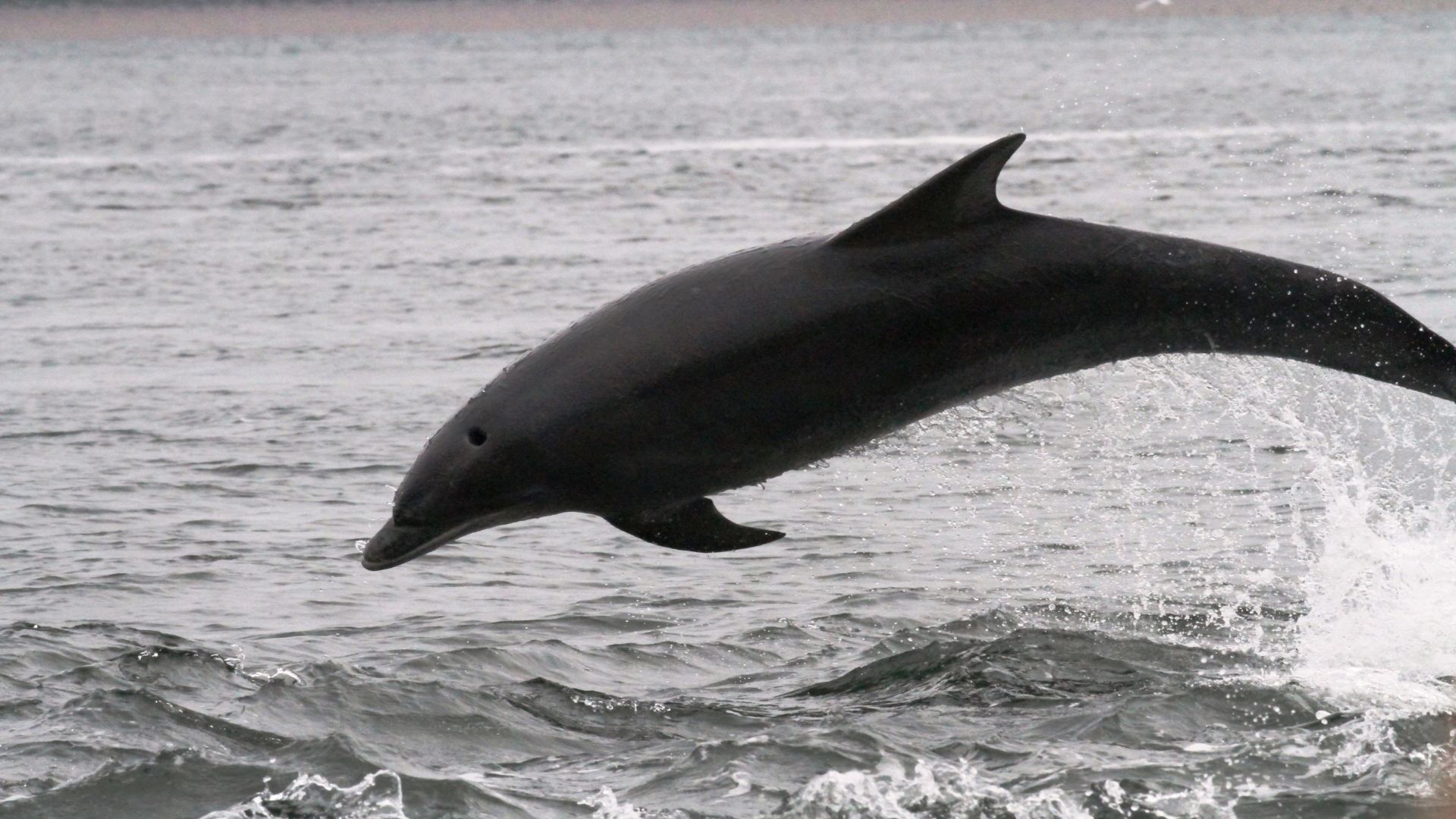
Moray Firth dolphin breaching
Bottlenose dolphins, the genus Tursiops, are the most common members of the family Delphinidae. They are warm-blooded mammals and very social. The Moray Firth in Scotland is home to a population of around 190 bottlenose dolphins, including the WDCS adoption dolphins. Our bottlenose dolphins are the heaviest of the species as they are at their northernmost limits and have more body fat to keep them warm in the cooler waters of the Moray Firth. The Moray Firth also plays host to an abundance of other wildlife including seabirds, otters, ospreys, seals, harbour porpoises, basking sharks, minke whales and common dolphins.
Great places to watch for dolphins are from the ramparts of Fort George or Chanonry Point on the Black Isle. Between these two points the Moray Firth narrows so you get close to the dolphin action. I would say that although Chanonry Point has been described as the best place to watch dolphins from the land in the UK, it does get very busy in the summer and the car park, (chargeable in summer) gets full quickly. I personally prefer the ramparts of Fort George (entrance fee) It's not so crowded and there's toilets and a cafe on site. The elevated viewpoint also gives you a really good view up and down the Moray Firth.
Interesting facts about bottlenose dolphins.
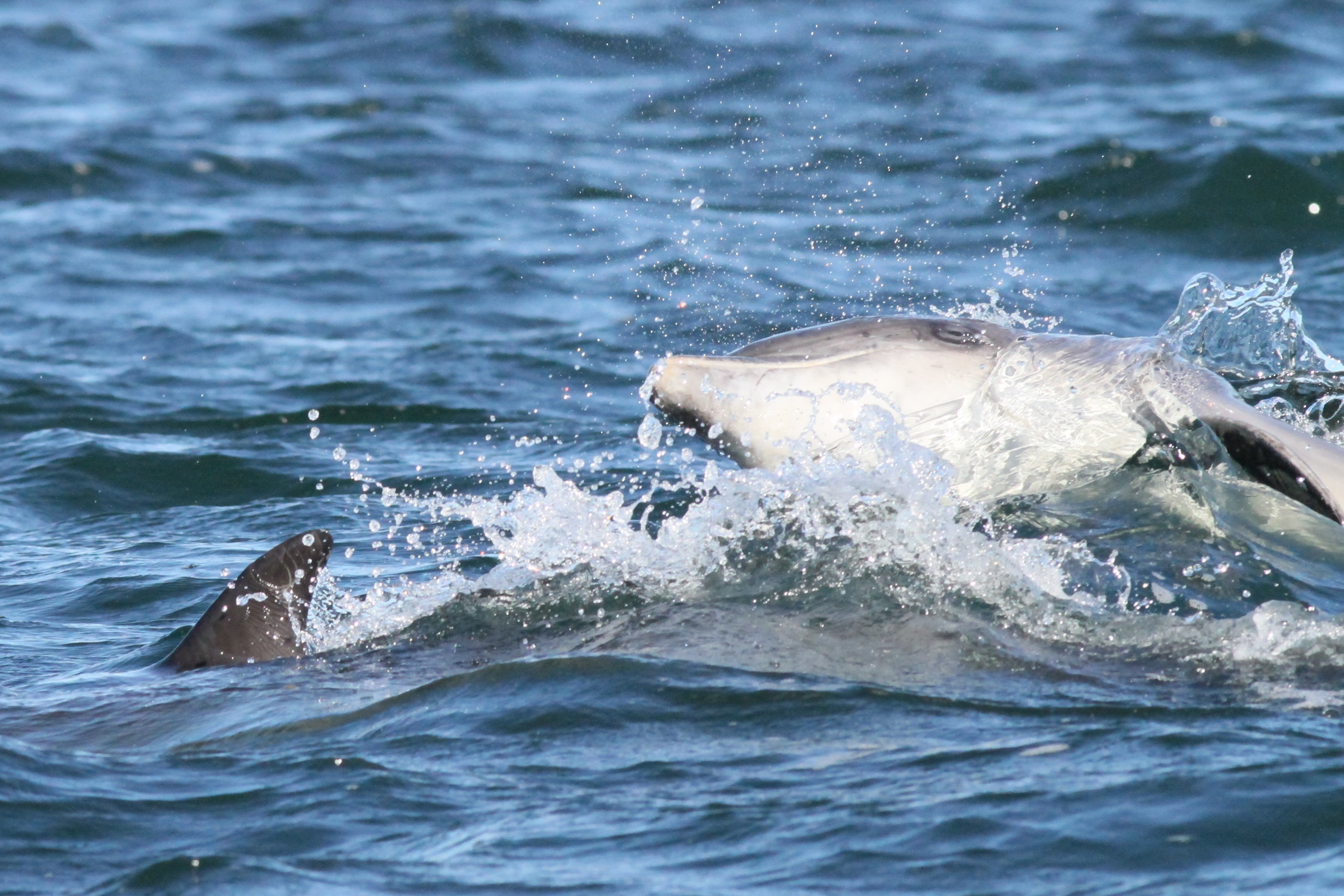
Bottlenose dolphins at play

Chasing a very small fish

Moray Firth bottlenose dolphin and calf
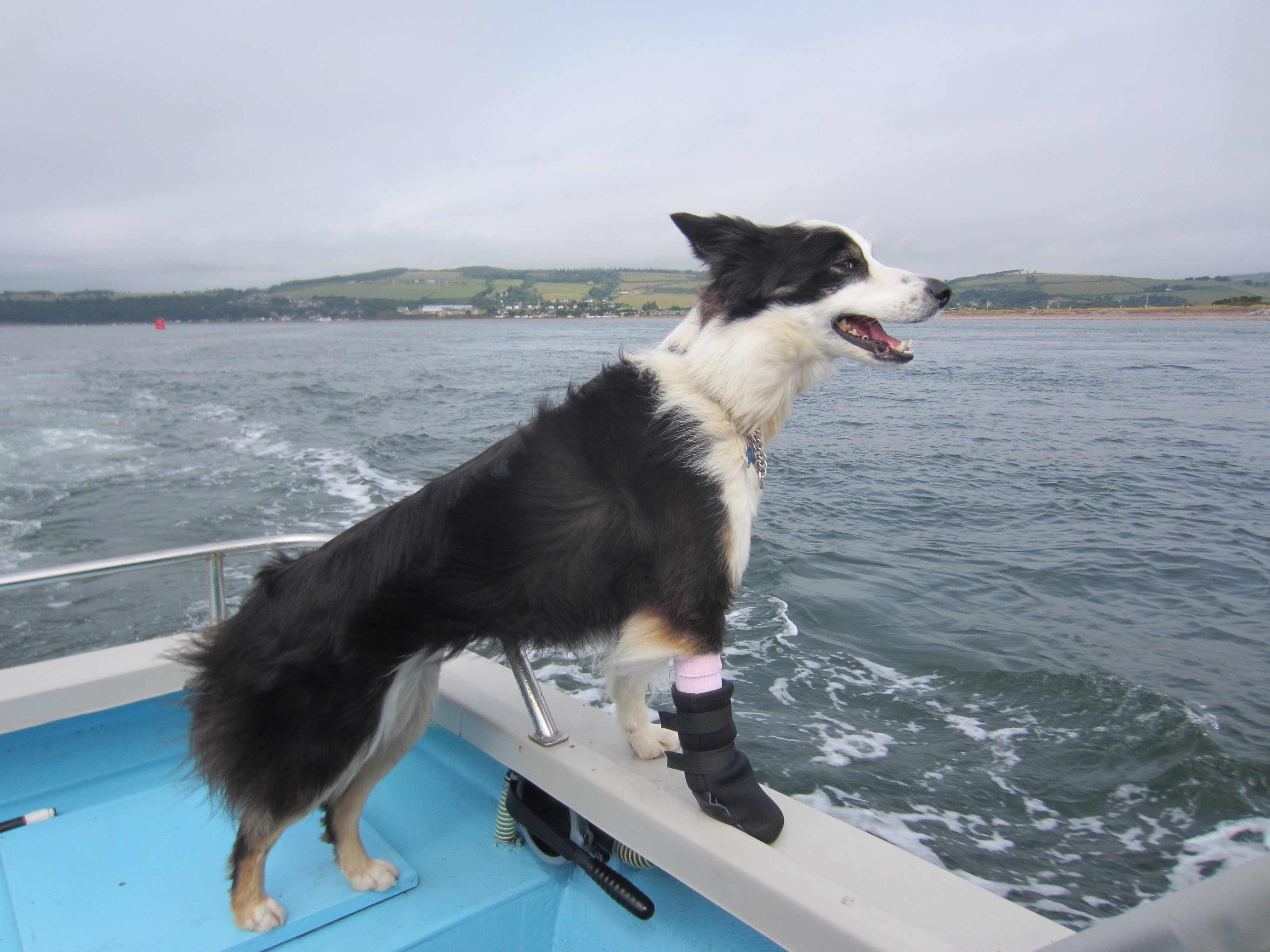
The dolphin boat trip dog. Somehow this dog always knew where the dolphins would pop up next
These beautiful creatures have a short thick beak (as their name suggests!) and a curved mouth, giving the appearance that they are always smiling. They are usually grey in colour, and measure around two to four metres in length.
They are social creatures, bottlenose dolphins travel in groups called pods of around 10-15. In these groups they play and hunt together, as well as cooperate to raise young dolphin calves and help each other. Dolphin labour varies between 20 minutes and two hours, the young are born tail first so they don’t drown.
Bottlenose dolphins are super swimmers, gliding through the water using their curved dorsal fin on their back, a powerful tail and pointed flippers. They can reach speeds over 25 miles per hour and dive as deep as 800 feet below the surface!
Dolphins are awesome acrobats, too, and can be seen breaching out of the water. In fact, they can launch themselves up to five meters out of the water. There are different theories as to why they do this – it could be to get a better view of things in the distance, clean parasites off their bodies, communicate with other pods or just for good fun!
Although they live underwater, the bottlenose dolphin must come up to the surface to breath air. It breathes through what’s called a blowhole a hole at the top of its head. They can open this hole when inhaling and exhaling out of the water, and close it when below the ocean surface. They can hold their breath underwater for around seven minutes.
Dolphins sleep with one eye open and half their brain working. Unlike humans, bottlenose dolphins need to be awake to breathe. They also have an internal temperature of 98.6 Fahrenheit, the same as humans.
Bottlenose dolphins produce high-pitched clicks to help them navigate and find food – a process called echolocation. When the clicking sounds hit an object in the water – such as a rock or fish – they bounce back to the dolphin as echoes. From this, they can work out the location, size and shape of the object. Dolphins are not able to smell prey but they have an acute sense of taste, being able to distinguish between, sweet, sour, bitter and salty. They also have very good eyesight both in and out of the water.
Dolphins eat mostly fish, up to 15 -30 pounds per day, they will also eat crustaceans such as shrimp and squid. They don’t chew and eat fish and squid, whole. They always eat their prey head first to avoid going against the grain with the scales. When hunting they will often smack their prey with their tail to stun them.
There are three dolphin species in the Moray Firth, the bottlenose dolphins. Risso's dolphins and (the not so common) common dolphins. You are most likely to spot dolphins between an hour to two hours after the tide has turned and is rising. Good places are Chanonry Point on the Black Isle and from Fort George.
For centuries, sailors and fisherman have considered seeing dolphins at sea as a sign of good luck.
Scottish Dolphin Centre, Spey Bay

Bottlenose dolphin breaching, view of blowhole

Bottlenose dolphin in Moray Firth
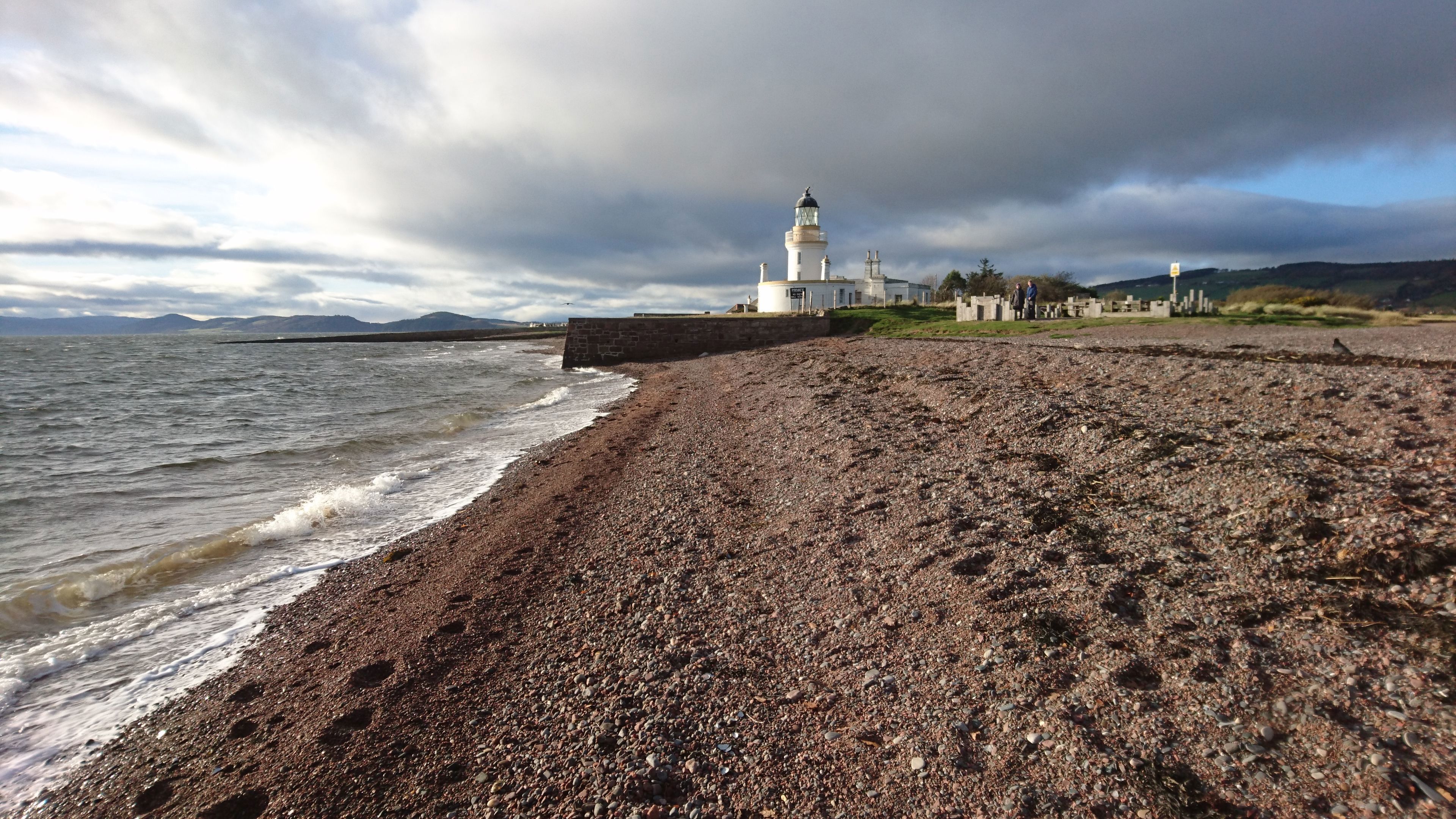
Chanonry Point Lighthouse in November
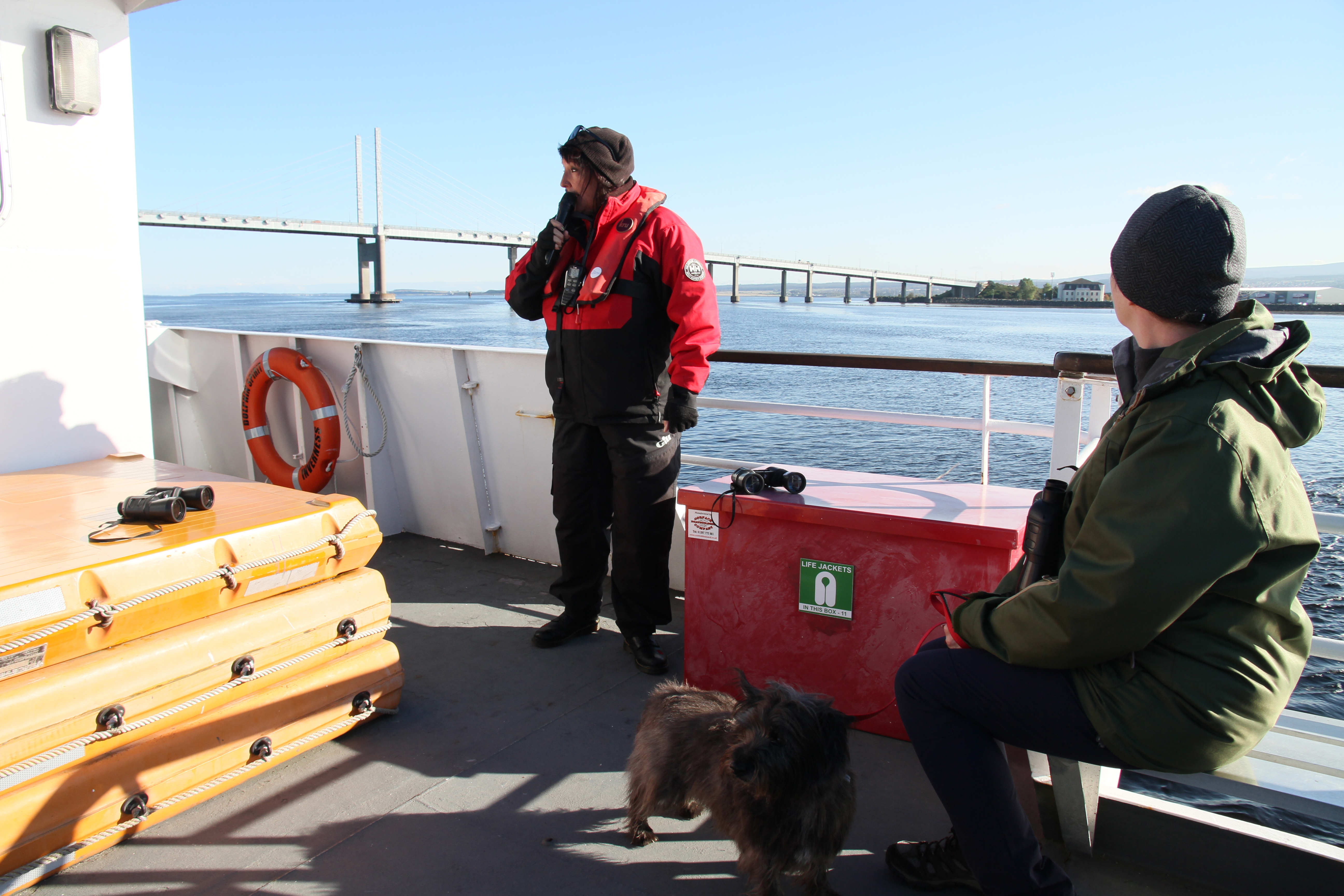
Onboard Dolphin Spirit, a dolphin spotting boat
The Scottish Dolphin Centre is based on the southern shore of the Moray Firth in Scotland. It is the perfect place to find about the amazing wildlife of this area, including the world famous bottlenose dolphins.
Based at the mouth of the River Spey on the southern side of the Moray Firth on the east coast of Scotland, the centre is about an hour’s drive from Inverness. Set on a 450 hectare nature reserve that is home to ospreys, grey and harbour seals, otters, wildfowl and waders. It has exhibitions, café, toilets and shop.
Attractions include:
• An Underwater World experience, in the biggest Ice House in Scotland
• Extensive education and outreach programme for children and schools.
• Walking on the beautiful Scottish Wildlife Trust Reserve
• Watching otters, ospreys, seals and other local wildlife
• Listening to live underwater sound from the sonobouy and exploring the acoustic exhibition
• Café Wild; relax and unwind with delicious homemade cakes and a cup of tea
• Gift shop with a fantastic selection of souvenirs.
• Spot some of the biggest bottlenose dolphins in the world using our binoculars and telescopes
Telephone: 01343 820339
Dolphin Boat Trips
As the dolphins follow the tide to feed on fish you can often see them in the channel between Fort George and the popular viewing point at Chanonry Lighthouse on the Black Isle. You can also take boat trips, please make sure that the boat operator is responsible and is approved as Wildlife Safe Operator - one such company is http://www.dolphintripsavoch.co.uk/ based at Avoch harbour. Another recommended company based in Inverness is Dolphin Spirit. This company runs two types of trip, there is the adrenaline fuelled RIB boat and a gentler wild life cruise on a purpose built boat for up to 75 passengers on two decks, with a heated inside cabin. Park at Inverness Marina. Cruise duration is 1hr 15 minutes with four sailings each day from April to the end of October. Well behaved dogs are welcome on the cruise. Visit www.dolphinspirit.co.uk, or call 07544 800620




